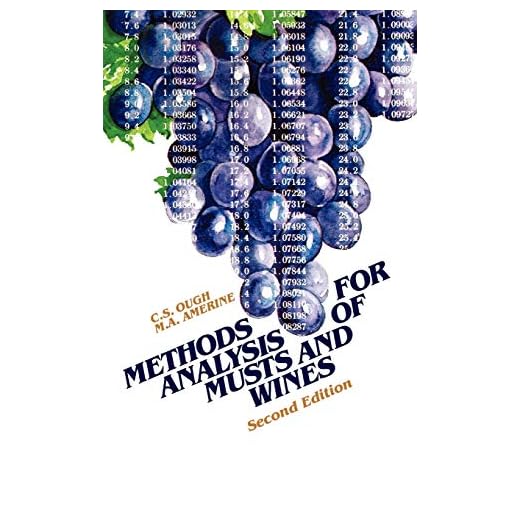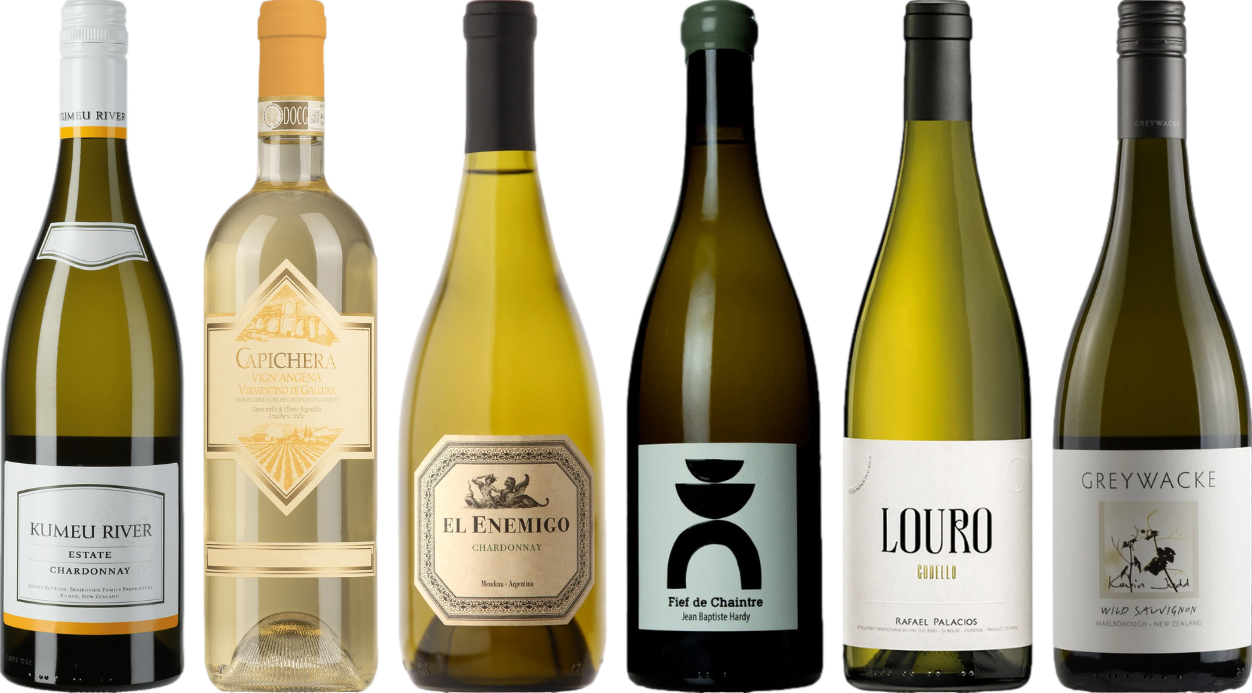



I recommend considering this drink as a largely consistent liquid. It exhibits a uniform composition, where the dissolved components, such as acids, sugars, and alcohol, create a stable environment. This characteristic ensures that each sip delivers a similar experience in flavor and aroma, making it an ideal choice for those seeking reliability in their palate.
However, it’s essential to acknowledge the subtle complexities that arise from various factors such as grape variety, fermentation process, and aging conditions. These elements contribute to distinct profiles, but they do not alter the overall consistency of the beverage itself. While the nuances are intriguing, the fundamental nature remains uniform, appealing to both novice enthusiasts and seasoned connoisseurs alike.
In conclusion, you can confidently regard this drink as a cohesive entity, with its structure allowing for delightful exploration without sacrificing the essence of its character. Understanding this aspect can enhance your appreciation and selection process, whether you’re pairing it with a meal or enjoying it on its own.
Is White Wine Heterogeneous or Homogeneous
In my experience, the characteristics of this beverage can be viewed through the lens of its composition. While it appears uniform in color and clarity, a deeper analysis reveals a complexity that suggests it is not purely consistent throughout. The presence of various compounds, such as acids, sugars, and phenolics, contributes to its multifaceted nature.
Let’s break down the components involved:
| Component | Role |
|---|---|
| Acids | Influence taste and balance |
| Sugars | Add sweetness and mouthfeel |
| Phenolics | Contribute to flavor complexity |
| Alcohol | Affects body and finish |
Each bottle can exhibit different profiles based on the grape variety, terroir, and vinification methods. This variability means that while one might perceive a certain consistency in appearance, the actual experience in taste and aroma can vary widely from one sample to another. Therefore, I lean toward categorizing this drink as a blend of both types, with a base that is relatively stable and recognizable, yet enriched by a diversity of elements that create a layered tasting experience.
In conclusion, the classification may not be straightforward. Understanding this complexity enhances appreciation and guides better pairing decisions, ultimately enriching the overall enjoyment of the beverage.
Understanding the Composition of White Wine
The structure of this beverage is defined by its intricate blend of various elements. The primary components include water, alcohol, and organic compounds, which work together to create the overall profile. Water typically constitutes the majority, often around 80-90%, influencing the drink’s texture and mouthfeel.
Alcohol content generally ranges from 8% to 14%, significantly affecting the flavor intensity and how the beverage is perceived. The sugars from grapes ferment into alcohol, which contributes to the balance of sweetness or dryness in the final product.
Organic compounds, including acids, phenolics, and esters, play a pivotal role in shaping taste and aroma. Acidity, primarily from tartaric and malic acids, provides freshness and structure. This acidity is critical for food pairing, enhancing the dining experience.
Phenolic compounds contribute to the complexity of flavors and can influence color stability. They also interact with proteins in food, enhancing overall pairing capabilities. Esters are responsible for the fruity and floral notes that characterize many varieties.
Understanding the blend of these components allows enthusiasts to appreciate the nuances in flavor and aroma. Recognizing how these elements interact can lead to more informed choices when selecting a bottle or pairing with a dish. Knowledge of the composition not only elevates tasting experiences but also enriches the conversation surrounding this timeless beverage.
Examining the Physical Properties of White Wine
To understand the characteristics of this beverage, one must consider its clarity, color, and viscosity. Typically, clarity ranges from crystal clear to slightly cloudy, influenced by filtration and sediment presence. The visual aspect offers insights into the overall quality and age.
Color Analysis
Color plays a crucial role in determining the type and potential flavor profile. Ranging from pale straw to deep golden hues, the pigmentation results from grape variety and winemaking techniques. A deeper color can indicate greater aging or the presence of oak influence.
Viscosity and Legs
Viscosity, or the thickness of the liquid, is often assessed by observing the ‘legs’ that form on the glass after swirling. Those with higher alcohol content will typically exhibit more pronounced legs, suggesting a richer body. This can influence food pairing decisions, as a fuller-bodied option pairs well with richer dishes.
Understanding these physical properties enhances appreciation and guides choices in selection and pairing, ensuring a more enjoyable tasting experience.
Identifying Components that Affect Wine Uniformity
To determine the uniformity of a beverage, one must examine its components carefully. The primary factors influencing consistency include grape variety, fermentation process, and additives. Each of these elements plays a distinct role in shaping the final product.
Grape Variety and Terroir
Different grape types contribute unique flavors and aromas. The terroir, which encompasses the climate, soil, and geography where grapes are cultivated, further influences characteristics. For example, different regions produce grapes with varying acidity levels and phenolic compounds, which can lead to noticeable differences in the final liquid.
Fermentation and Aging Techniques
The fermentation process, including yeast strains and temperature control, significantly affects the outcome. Techniques such as malolactic fermentation can soften acidity, while aging in oak barrels can impart additional flavors. The duration and method of aging also play a pivotal role in achieving a consistent profile.
Additives such as sulfur dioxide are commonly used for preservation and stability. However, the choice and quantity of these additives can impact both taste and appearance. Understanding these components is essential for evaluating the overall consistency of the beverage.
For those interested in capturing the beauty of wine, consider investing in the best compact digital camera zoom panorama to document your tasting experiences and the subtle differences in various selections.
Analyzing the Impact of Filtration on Wine Consistency
Filtration is a key process that significantly influences the clarity and stability of a beverage. Utilizing various methods, this technique removes suspended particles and microorganisms, leading to a more polished product. However, the choice of filtration can alter the final characteristics of the drink.
Here are critical aspects to consider when evaluating the effects of filtration:
- Type of Filtration: Different methods, such as depth filtration or membrane filtration, yield distinct outcomes. Depth filtration can retain some flavor compounds, while membrane filtration may strip more volatile components, affecting the overall profile.
- Particle Size Removal: The size of particles removed during the process can impact mouthfeel and aroma. Larger particles contribute to texture, while smaller ones may influence the aromatic intensity.
- Microbial Stability: Filtration enhances the longevity of the product by reducing spoilage organisms. A stable beverage remains consistent over time, facilitating a uniform experience for consumers.
- Oxidation Control: Some filtration methods can introduce oxygen, which may alter flavor. It’s vital to monitor oxygen exposure during this process to maintain desired qualities.
- Sensory Evaluation: Conducting blind tastings pre- and post-filtration can provide insights into how the process affects sensory attributes. This evaluation is crucial for determining the impact on flavor and aroma profiles.
In my experience, the right filtration strategy is paramount. It’s not merely about achieving clarity; it’s about ensuring that the character and integrity of the drink shine through. Each choice made during filtration shapes the final experience and should be approached with care and precision.
Exploring the Role of Temperature in Wine Stability
Maintaining optimal temperature during storage and serving is crucial for preserving the integrity of your beverage. The ideal storage temperature typically ranges between 45°F to 65°F (7°C to 18°C), with most varieties thriving around 50°F to 55°F (10°C to 13°C). Fluctuations outside this range can lead to undesirable changes in flavor and aroma.
Impact of Temperature on Flavor Development
Temperature directly influences the release of volatile compounds, which significantly affects the sensory experience. Cooler temperatures tend to highlight acidity and freshness, while warmer temperatures can enhance fruitiness and complexity. Always consider the specific variety when determining the serving temperature; for instance, lighter styles are best enjoyed chilled, while fuller-bodied options gain character when served slightly warmer.
Temperature and Stability
High temperatures can accelerate chemical reactions, leading to premature aging and spoilage. Exposure to heat can cause oxidation and the breakdown of delicate compounds, resulting in off-flavors. To prevent these issues, ensure consistent climate control in storage areas, avoiding direct sunlight and temperature spikes. A dedicated wine fridge can be a wise investment for serious enthusiasts.
Comparing White Wine with Red Wine in Terms of Composition
Understanding the differences in composition between these two varieties is crucial for enthusiasts and professionals alike. Here are the key distinctions:
- Grape Variety: The primary difference lies in the type of grapes used. Light-colored grapes are typically used for the lighter variant, while dark-skinned grapes form the basis of the bolder variety. This choice significantly impacts flavor profiles.
- Phenolic Compounds: The darker option contains higher levels of tannins and anthocyanins due to skin contact during fermentation. In contrast, the lighter variant generally has lower tannin levels, resulting in a smoother mouthfeel.
- Acidity Levels: Often, the lighter option exhibits higher acidity, which contributes to its crispness and refreshing nature. This acidity can enhance food pairings, particularly with seafood and salads.
- Sugar Content: Variations in residual sugar can be observed. The lighter variety often presents a drier profile, although sweet styles exist. The bolder counterpart can range from dry to sweet, depending on the winemaking process.
- Aroma and Flavor Compounds: Aromas differ significantly. The lighter version often features floral and citrus notes, while the more robust type can offer dark fruit flavors, spices, and earthy undertones.
- Serving Temperature: The lighter option is typically served chilled, enhancing its refreshing qualities. The more intense counterpart is usually enjoyed at slightly warmer temperatures, allowing its complex flavors to unfold.
Exploring these differences enhances appreciation and understanding of each variant, aiding in better food pairing and enjoyment experiences.
Practical Implications for Storage and Serving
Store bottles upright to minimize contact between the cork and liquid, reducing the risk of cork taint. Maintain a consistent temperature between 45°F and 55°F to preserve delicate flavors and aromas. Avoid direct sunlight and vibrations, as they can negatively impact the integrity of the beverage.
Use a temperature-controlled wine fridge or cellar for optimal conditions. If a dedicated unit isn’t possible, find a cool, dark place in your home with stable temperatures. Always check the humidity level; around 70% is ideal to keep corks moist and prevent oxidation.
Before serving, allow the beverage to rest at optimal temperature for a few hours. Use a thermometer to ensure accuracy. Pour into clean, appropriate glassware to enhance the sensory experience. Rinse glasses with a small amount of the beverage to eliminate any residual odors from previous uses.
Serve in stemmed glasses to avoid warming the liquid with your hands. For best results, fill the glass to a third of its capacity, allowing space for aromas to develop. Swirling can aerate the beverage, releasing volatile compounds that improve the tasting experience.
Consider decanting if the beverage is particularly young or has a high level of sediment. This process can enhance flavor and aroma by exposing it to air. Allow it to breathe for at least 20-30 minutes before serving.
Pair carefully with food, considering the balance of flavors. Lighter dishes, like seafood or salads, complement well. Always taste and adjust based on personal preferences and the specific characteristics of the bottle in hand.








